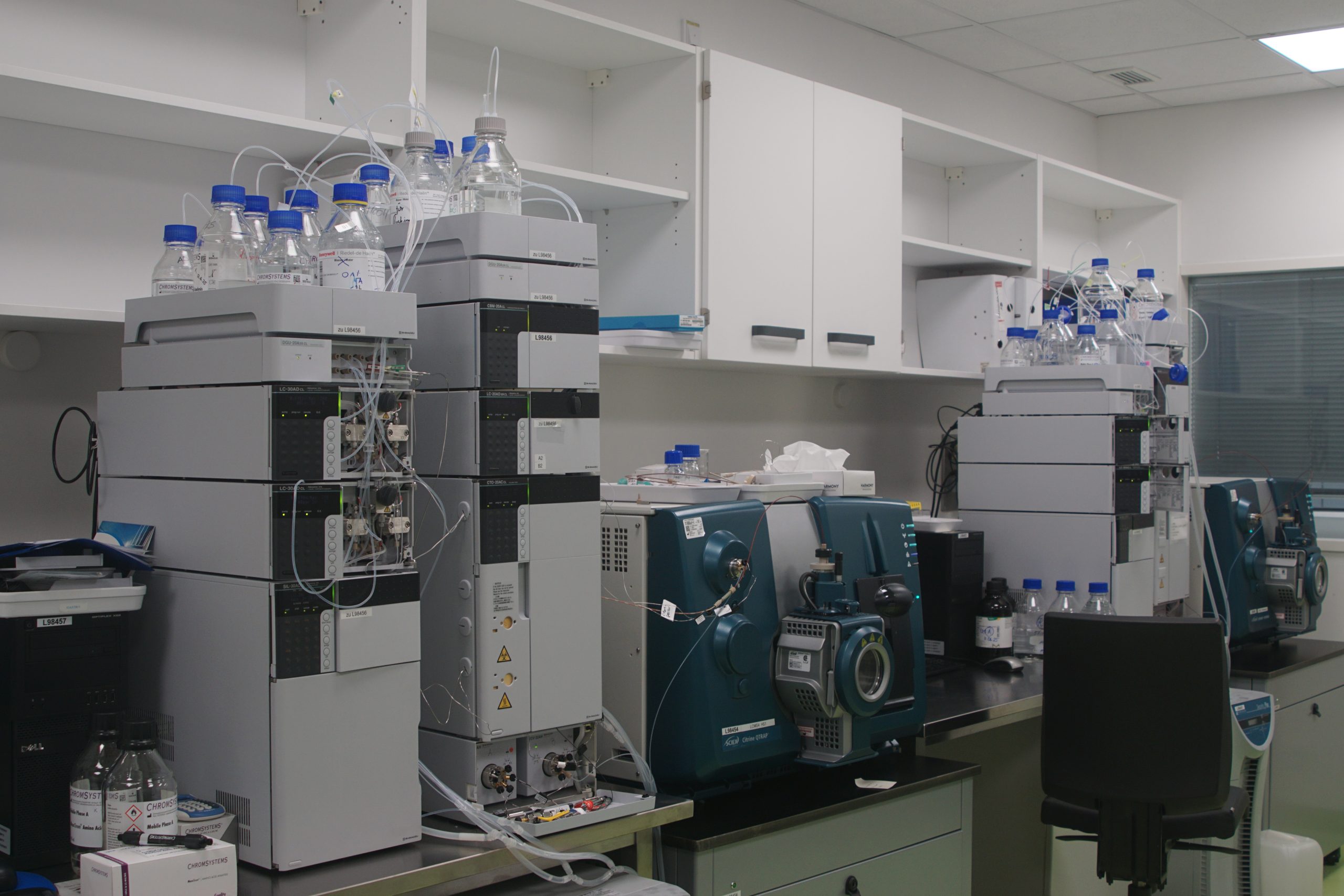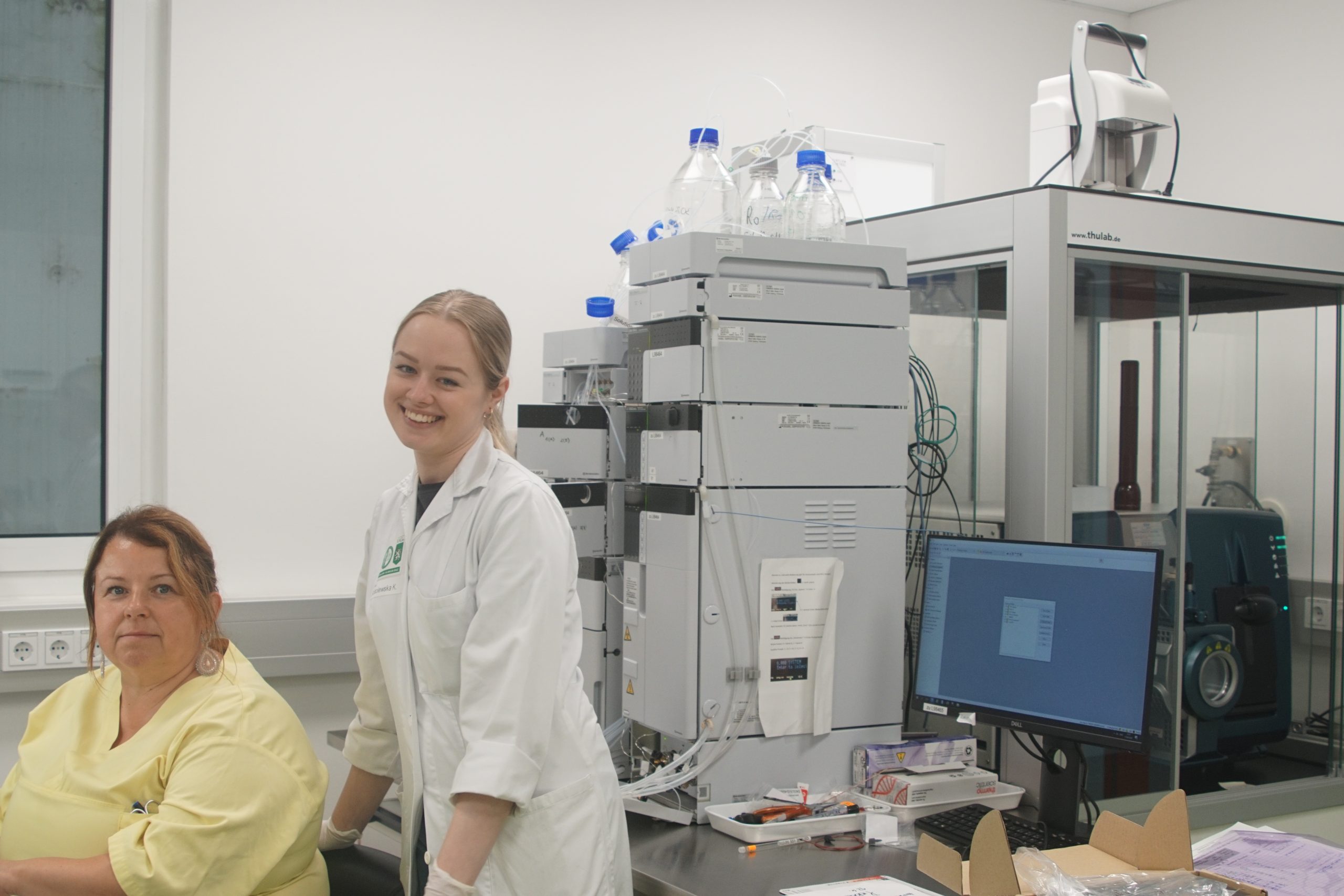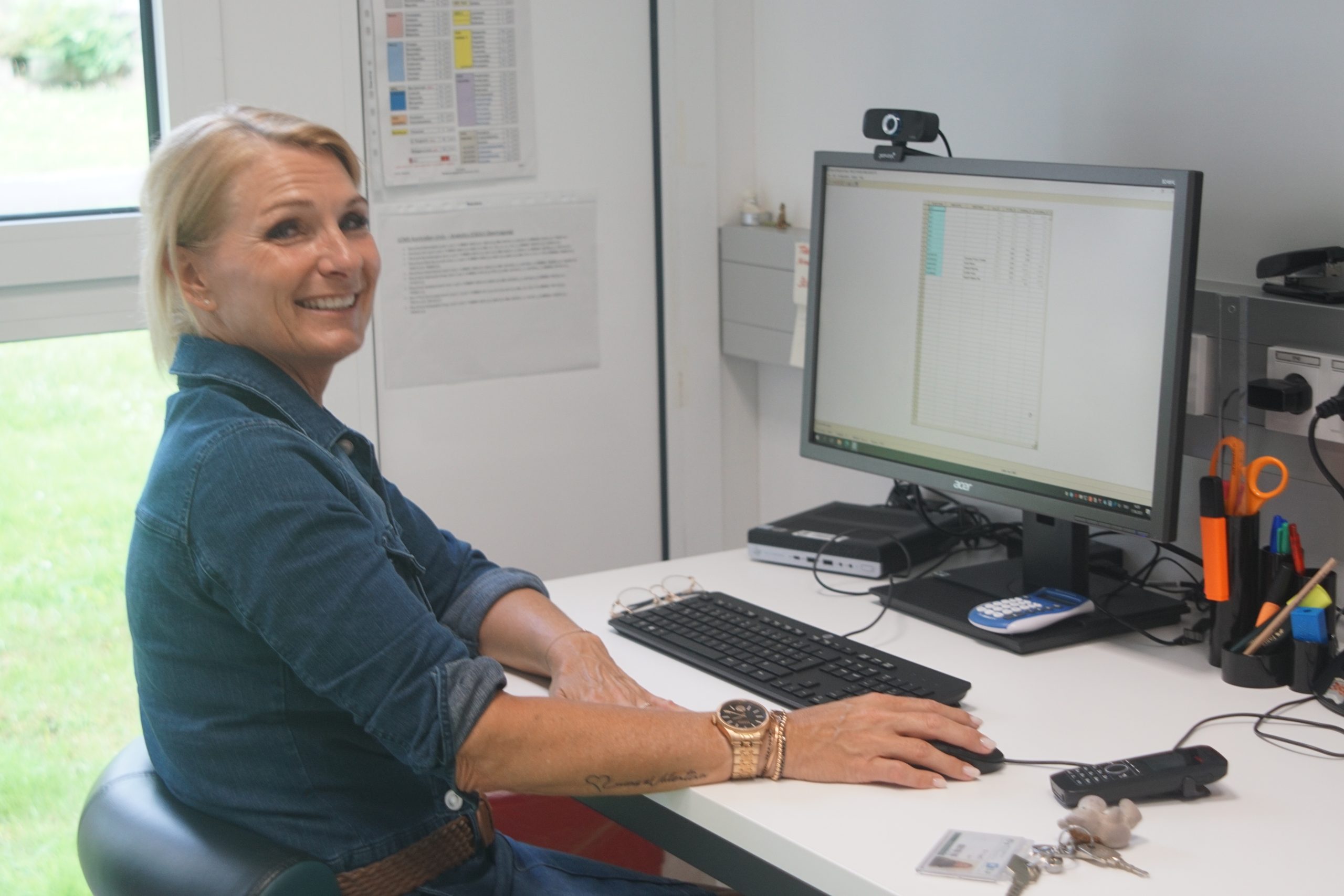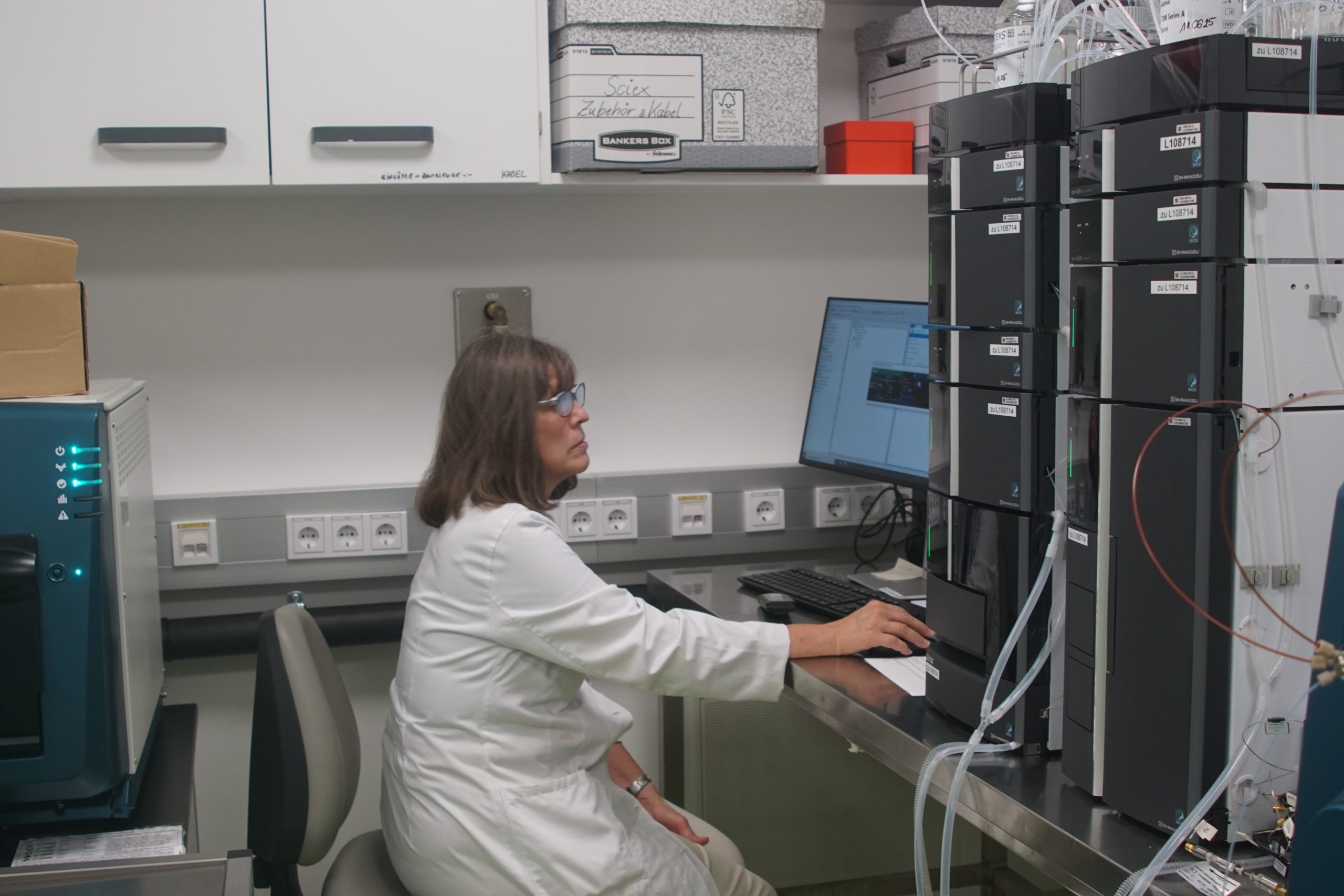Work- and Dataflow Automation of Sciex LCMS Instruments at the Therapeutic Drug Monitoring and Metabolomics Laboratories of Graz University Hospital
Kevin Jones¹, Prof. Dr. Markus Herrmann², Dr. Sieglinde Zelzer², Giovanny-Alejandro Rodriguez Blanco2, Katarzyna Janina Sobolewska2 Nicole Friedl², Erwin Scala², Graham Pratt1 , Mathieu Schoeber¹
¹ CSols Ltd, Runcorn, Cheshire WA7 4QX, UK
² Medical University of Graz, Institute of Clinical and Chemical Laboratory Diagnostics
Overview
The Therapeutic Drug Monitoring (TDM) and Metabolomics laboratories at the University Hospital of Graz, Austria, has experienced significant growth in sample volumes and analytical complexity in recent years. This growth is attributed to the expertise of the staff and the laboratory’s reputation for excellence. The result is an increase not just in the volume of sample testing from their own hospital activities, but also from other regional healthcare facilities. Most notably, the laboratory has absorbed the workload from the University Hospital of Innsbruck, a testament to the efficiency and high-quality standards maintained at Graz.
To manage this increasing volume effectively, while maintaining their commitment to excellence, the laboratory uses the CGM Analytix Laboratory Information System (LIS). Under the visionary leadership of Prof. Dr. Markus Herrmann, Director of the Institute of Clinical and Chemical Laboratory Diagnostics, the laboratory has also invested in cutting-edge Sciex LC-MS/MS Mass Spectrometer instruments. To maximize the potential of this advanced instrumentation, Prof. Herrmann made the strategic decision to implement a bidirectional, highly flexible, and configurable connection between these instruments and their LIS by implementing CSols Links for LIMS software.
Key Challenge
The increasing demand for therapeutic drug monitoring and specialized analytics places significant pressure on laboratory staff. Before automation, manual processes were time-consuming and introduced risks of transcription errors. The laboratory needed a solution that would allow them to:
- Process a higher volume of samples without compromising quality
- Reduce manual data entry and associated errors
- Decrease turnaround times
- Maintain their position as a center of excellence
The Solution: Bidirectional Integration
After evaluating various options, the laboratory selected CSols Links for LIMS to create a fully bidirectional integration between their five Sciex LC-MS/MS systems and the CGM Analytix LIS. This integration automates both the instrument setup process and results reporting, eliminating manual data transcription and significantly reducing the administrative burden on laboratory personnel.
To give an idea about the complexity and the workload:
- The laboratory uses 5 Sciex LC-MS/MS systems (2x Citrine & 3x 4500 instruments with 1 Agilent and 4 Shimadzu LC systems all running Sciex Analyst MD software and for some analyses MultiQuant Software).
- The laboratory carries out the quantitative analysis of a number of drug groups including Anti-arrythmics, Anti-biotics, Anti-epileptics, Anti-depressants, Anti-mycotics, Benzodiazepines, Immunosupressants, Neuroleptics, Carnitines, MMA, MPA, Bile Acids, Amino Acids, Methanefrines, and TCA etc.
- Analysis is typically done in discrete drug panels in batches varying in size up to 100 injections.
- The laboratory makes use of patient and other demographic data stored in the LIS system for samples arriving into the laboratory, to schedule and carry out analysis.
- Sciex Analyst is used to setup runs for all assays and must include the right type of autosampler, its layout, correct analysis method, and the inclusion of correctly positioned control and patient samples.
- For specified methods a calibration is performed only once per day, so that the next runs of that method on that day, can use the calibration data of the first run.
- Also, for simplified operation and convenience, the laboratory wished to directly access all of the current, and possibly future instruments (located in the noisy instrument laboratories), from other PC workstations located (in a workup/office room).
All of these requirements have been met with the standard functionality of Links for LIMS, by accordingly configuring of the system, no programming was required.
The Team
The success of this implementation is due to the collaborative efforts of the entire laboratory team:
- Prof. Dr. Markus Herrmann – As Director, Prof. Herrmann provides visionary leadership that prioritizes both technological advancement and analytical excellence. His commitment to providing his team with the best available tools has been instrumental in positioning the laboratory as a regional leader.
- Dr. Sieglinde Zelzer – Managing the TDM laboratory, Dr. Zelzer oversees daily operations and ensures that the integration meets the practical needs of the laboratory staff.
- Katarzyna Janina Sobolewska – Ms. Sobolewska is one of the key laboratory staff (Metabolomics Lab) and was involved in the onsite implementation of the project and acts as one of the support contacts.
- Nicole Friedl – As a key laboratory analyst, Ms. Friedl performs analyses with the LC-MS/MS instruments and contributes to method harmonization efforts, ensuring consistent analytical performance across multiple instruments. Mrs Friedl was also involved in the implementation of the project.
- Erwin Scala – Leading the IT aspects of laboratory automation, Mr. Scala provides crucial technical support and has supplied valuable metrics on the laboratory’s throughput and performance.
The laboratory also collaborates closely with the Metabolomics laboratory, which operates with the same instrument park and partially shares staff members under the direction of Dr. Giovanny-Alejandro Rodriguez Blanco.
The Automation Workflow
Links for LIMS has enabled a streamlined workflow at the TDM and Metabolomics laboratories:
- Sample Registration: All samples are pre-registered in the CGM Analytix LIS, associating them with patient demographic data, Sample ID’s and test requests.
- Automated Worklist Generation: Instead of manually creating instrument worklists, analysts use Links for LIMS to automatically extract sample information from the LIS and generate appropriate method based run sequences. This creation of run sequences is done in the sample preparation room, by scanning the samples that will be in the analytical run. Samples are then automatically combined with calibration and control samples to create the run sequence file. Links for LIMS makes use of the Sciex Analyst Application Programming Interface (API) instrument to create a ‘ready-to-run’ uniquely named Sciex data acquisition batch (*.dab) file which includes calibration and QC data and all positioning information as suited to the vial or rack type being used. No further analyst action is required apart from starting the run on the selected LCMS instrument. The same applies b.t.w. for the results reporting.
Setup is done from any one of 10 PC Workstations in the workup/office locations.
- Instrument Control: This way Links for LIMS creates the necessary files for the Sciex LCMS instruments running Analyst software, ensuring that samples are analyzed using the correct methods, correct autosampler type and positions and the requested parameters per sample.
- Results Management: After analysis, when Analyst quantification is used, Links for LIMS is able to run directly from the Analyst menu to help automate results processing and send completed results to LIS. Where MultiQuant software is used an additional results export is needed. The Links for LIMS Report Results module handles both ways of working in exactly the same way.
- Secure communication with LIS Links for LIMS uses the ASTM1394 communication protocol which obviously is more secure than file exchange based methods and in clinical environments is the standard way of data exchange with LIS.
- Quality Control: The system automatically applies laboratory rules and QC limits for result evaluation, highlighting any potential issues that require analyst attention. This way the analyst can focus on possible problem areas like (QC or detection) limit breaches, presence of non-requested parameters in samples (e.g. the physician made an error in the requested parameter and the patient is on another drug), etc. and if needed review peak integration in the Analyst or MultiQuant software.
Results and Impact
The implementation of Links for LIMS has transformed operations at the TDM laboratory, enabling them to handle their increasing workload efficiently while maintaining their high standards.
Dr. Sieglinde Zelzer, Manager of the TDM laboratory, emphasizes the critical role of the integration:
“Without Links for LIMS, we simply could not manage all these samples and results.” says Dr. Sieglinde Zelzer
This powerful statement underscores how essential the automation has become to their daily operations. In summary the bidirectional integration has allowed the laboratory to:
- Absorb additional testing volume from other (University) Hospitals
- Reduce or even eliminate transcription errors compared to previous manual processes
- Save significant staff time in both test setup and results processing
- Allow analysts to focus on their core analytical tasks and quality assurance
- Streamline workflows across multiple Sciex instruments
- Enhance data integrity throughout the testing process
- Monthly a minimum of over 7500 results, spread over some 10 methods and 5 LCMS instruments (of different configuration) are transferred by Links for LIMS and these numbers are all growing!
Support
Because of the critical nature of the instrument integration the Graz University Hospital labs decided to use the CSols Enhanced Support Contract when ordering the project. This decision has proven to be the right one as the system is easily adaptable (e.g. adding a new component to an existing analyses method panel) is simple and provides an immediate solution so that there is no need to allow interim manual entry of the results for the new component. Furthermore, the laboratory staff are very happy with the level of support and the speed of resolving issues.
“Nobody does what you do”, says Dr. Giovanny-Alejandro Rodrigues Blanco.
The Future
The laboratory recently ordered a new LC-MS/MS instrument for which a bidirectional integration was part of the purchase (just implemented), bringing the total number of instruments to 6. Also, for the colleagues of the Metabolomics lab two additional instruments (LCMS-QTOF and GCMS), currently using results uploaded by file exchange, are being considered for integration with Links for LIMS. This integration will provide the benefits of bidirectional integration using a more secure communication mechanism and reduce the use of different integration solutions for improved consistency and a reduction in on-going training requirements. Further integrations with a new HPLC system are also being considered.




